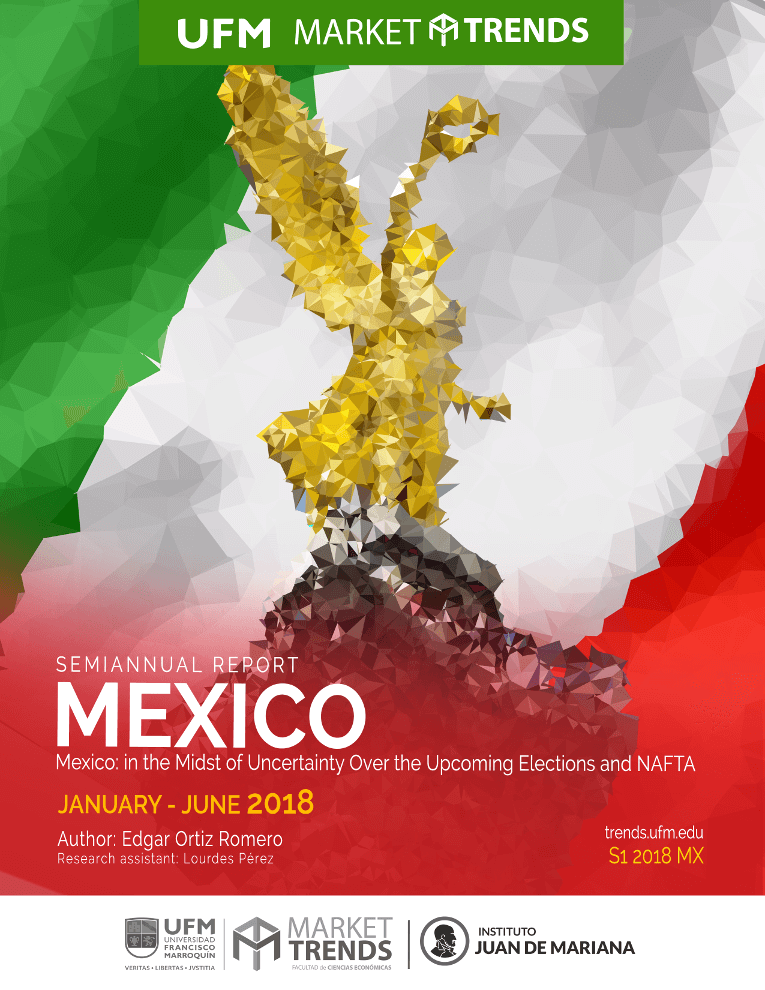Mexico S1 2018 Report
Mexico: in the Midst of Uncertainty Over the Upcoming Elections and NAFTA
In 2017, Mexico grew 2.1% according to preliminary data from the National Institute of Statistics and Geography (INEGI); another year for which the country shows mediocre growth. Industrial activity has remained low, partly due to poor mining activity and to the uncertainty created by the renegotiation of the North American Free Trade Agreement (NAFTA).
Unemployment levels remain at historically low levels. However, inflations reached its highest point in the twenty-first century, reaching an annual rate of 6.77%. Inflation has diminished the real income of Mexican workers, reflected in the drop in vehicle sales. Along with the restrictive monetary policy, short-term interest rates are at their highest levels since 2009.
The two big questions troubling the Mexican economy are: who will win the elections in July? And, what will happen to NAFTA? The fact that Andres Manuel López Obrador heads the polls generates concern among businessmen. The pessimism that accompanies the NAFTA renegotiations are making many expect the worst outcome. The Mexican industry most affected by a break in NAFTA would be the automobile sector. However, thanks to the most-favored-nation principle, even a break with NAFTA would lead to an average tariff of 5% for Mexican products entering the United States.



